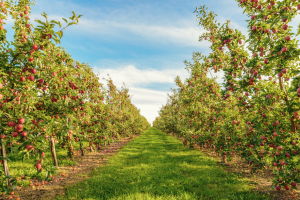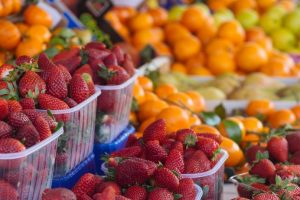Managing our Food Resources

Its hard to envision providing enough fresh fruits and vegetables to every citizen in the United States, considering that 40% of the country’s food production is thrown away. (1) That represents $165 billion dollars’ worth of food wasted each year, along with 25% of all fresh water resources used for its production.
To make matters worse, almost all of that wasted food ends up rotting in landfills, accounting for 16% of U.S. methane emissions, and contributing to global warming. (2) If we could reduce those losses by just 15% we could feed an extra 25 million Americans every year. This is happening while 1 out of 6 Americans lack a secure food supply. (4) (5)
Out of all the food that goes to waste in the United States, fruits and vegetables are the category with the largest percentage loss. It is estimated that between 50% and 65% of all fruits and vegetables produced in the United States go to waste. From this total, around 20% is wasted during the production process, 3% is lost during post-harvest handling and storage, 12% is gone during the distribution and retail stage, and 28% is attributed to consumer losses. (3)
Luckily, new initiatives are being executed to minimize these losses, and allow more fruits and vegetables to reach households and feed the hungry. For example, the number of farmer markets has doubled over the past 10 years. This has allowed growers to sell good-quality products that might not meet size, shelf life, or other criteria imposed by retailers. In addition, states like California, Arizona, Oregon, and Colorado have passed bills, allowing growers to receive a tax credit for donations of excess produce made to state food banks.
There are hundreds of changes we can make at the governmental, corporate, and personal level, to ensure efficiency in food production, and improve food security. Like I said before, the United States has all the resources needed to provide an abundance of fresh fruit to its population. We don’t need more land, water, technology or money, we just need to improve the way we manage our resources.
Eating a raw vegan or fruit based diet doesn’t need to be expensive. We can always get our produce at a lower cost. Buying in bulk, straight from the farmers, or from wholesale distributors, is a sure way to reduce our food expenses. If you think bulk purchases are too big, you may split your purchases with family members and friends. This way we can save money without wasting any food.
Remember that by following raw vegan and fruit based diets we are saving in many other ways. First, these diets are simple and require minimum preparation and cleaning time. This alone could save us a few hours every day. In addition, by following these diets we are likely to reduce the number of meals purchased at restaurants, increasing our weekly savings.
There is also the added benefit of improved health, which is likely to save each person thousands of dollars per year, reducing our medical expenses, trips to the pharmacy, and doctor visits. Let’s not forget the extra savings in electricity, gas, and water, that come from adapting a clean diet that requires less processing and equipment.
Previous Section:
Next Section:
Acknowledgments
Thank you for reading!
Please donate to help us publish this book.
PayPal: trevesbruno@gmail.com
Venmo: @Bruno-Treves
Sources:
(1) http://journals.plos.org/plosone/article?id=10.1371/journal.pone.0007940
(2) http://www.epa.gov/climatechange/ ghgemissions/usinventoryreport.html
(3) https://www.nrdc.org/sites/default/files/wasted-food-IP.pdf
http://journals.plos.org/plosone/article?id=10.1371/journal.pone.0007940
(5) https://www.ers.usda.gov/webdocs/publications/45020/30967_err141.pdf?v=41165



